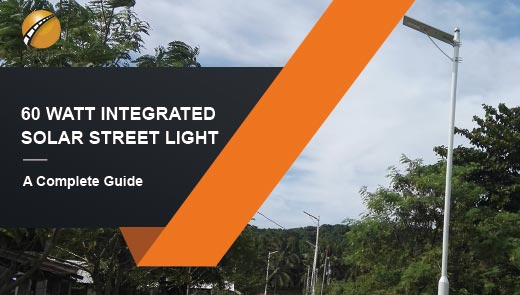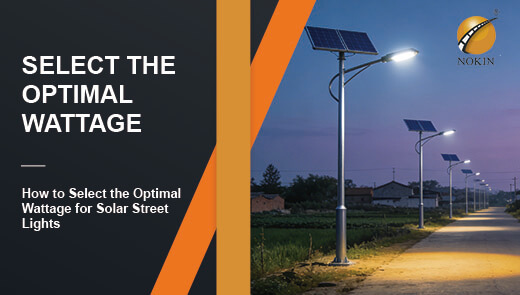Using Solar Street Lights: Benefits and What to Consider?
The global shift toward sustainable infrastructure, solar street lights are emerging as an ideal choice for urban and rural lighting due to their energy efficiency and eco-friendly nature. In recent years, as solar panel costs continue to decline and technology advances, demand for solar street lights has steadily increased while prices have become more affordable. This article will delve into the core advantages of solar street lights and key factors to consider during selection, providing you with comprehensive guidance.
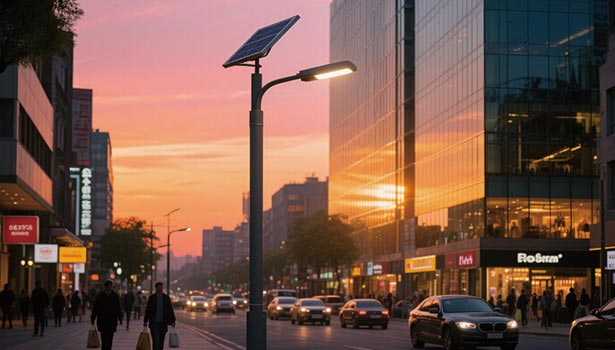
What is a Solar Street Light
A solar street light is an outdoor lighting fixture powered by photovoltaic panels. Typically mounted on lamp posts or lighting structures, these panels collect solar energy during daylight hours, converting it into electricity stored in rechargeable batteries. This stored energy powers fluorescent or LED lamps at night. Most solar street lights feature automatic on/off functionality via light sensors, designed to ensure continuous nighttime illumination. They remain operational even during consecutive days of overcast weather. In windy regions, these lights often incorporate flat-panel batteries to enhance wind resistance.
Core Components
- Solar panels: The core component of solar street lights, responsible for converting solar energy into electricity. They are primarily categorized into monocrystalline and polycrystalline types, with monocrystalline panels exhibiting significantly higher conversion efficiency than polycrystalline ones.
- Lighting Fixtures: Modern solar street lights predominantly utilize LED light sources, which deliver higher lumens (a unit of brightness) at lower energy consumption. Compared to traditional high-pressure sodium (HPS) lamps, LED fixtures reduce energy consumption by at least 50% and require no warm-up time. They can be further optimized for efficiency when paired with motion sensors.
- Rechargeable Batteries: These store electricity generated by photovoltaic panels during daylight hours to power lighting at night. Battery cycle life directly impacts the street light's operational lifespan, while capacity determines endurance during prolonged cloudy or rainy periods. Common types include gel deep-cycle batteries and lead-acid batteries.
- Controllers: These manage charging and lighting operations. Some modern controllers support programmable settings, allowing flexible configuration of charging, lighting, and dimming modes.
- Light Pole: Must possess sufficient strength to support the photovoltaic panel, luminaire, and battery at the top. In windy regions, wind resistance performance must be a key consideration.
An Overview of the Solar Street Lighting Market
Since the advent of solar street lighting technology, market demand has continued to grow while prices have steadily declined. The core reason lies in the gradual reduction of solar panel costs. Installation costs for all product types—commercial and residential solar street lights, outdoor street lights, integrated solar street lights, and solar LED street lights—are trending downward, further driving market adoption.
Currently, the Asia-Pacific region is the world's largest market for solar street light applications and is projected to maintain its leading position through 2030. Improved cost-effectiveness and technological advancements have made it easier for governments, businesses, and individuals to adopt this green lighting solution.
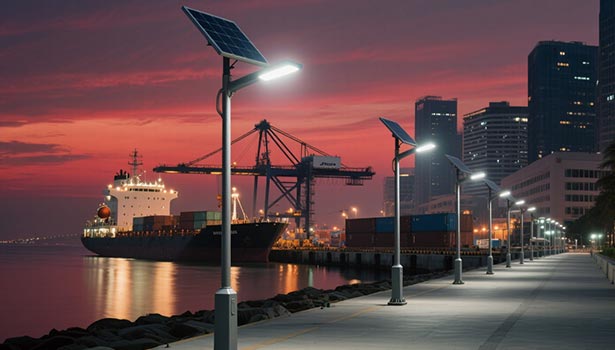
Benefits of Solar Street Lights
Environmentally Friendly
Traditional grid-powered street lights not only consume substantial municipal funds but also represent a major source of carbon emissions, accounting for 30% of local government emissions. Solar street lights, powered solely by sunlight, operate with zero carbon emissions, making them far more environmentally friendly. Additionally, some newly designed solar street lights incorporate LED fixtures with precise cutoff optical designs to reduce glare and enhance lighting comfort.
High Light Efficiency Advantage
Contrary to common misconceptions, solar street lights do not suffer from insufficient brightness. Conversely, conventional street lights experience higher failure rates. As a fourth-generation light source, LED are widely adopted in urban beautification, road lighting, courtyard illumination, and indoor lighting. Their application potential is particularly vast in remote, off-grid areas.
Easier to Install and Maintain
Solar street lights are particularly suitable for areas with limited power supply and newly constructed urban/rural roads. Their greatest advantage lies in eliminating the costs of cable laying and pipe excavation. They offer flexible placement and intelligent controls like automatic on/off based on light conditions, resolving the inflexibility of traditional street light installations and enabling rapid deployment.
Lifespan Increased
Solar street lights have achieved breakthroughs not only in luminous efficiency but also in product aesthetics, waterproofing performance, and cable connections between components, ensuring effective quality assurance. The built-in photosensitive system automatically activates lighting at night and remains operational even during a week of continuous rain. It is estimated that a single solar street light system can save nearly 17,000 kWh of electricity annually.
More Reliability
Solar street lights operate reliably throughout the night, unaffected by power outages, grid failures, or natural disasters. Utilizing intelligent MPPT controller technology, operators can configure lighting schedules, collect data on each fixture's energy consumption, temperature, and efficiency, and receive real-time alerts for faults or connection interruptions.
Cost-Effectiveness
Powered by free, unlimited, and renewable solar energy, solar street lights eliminate the need for finite resources like fuel, natural gas, or electricity. While initial purchase and installation costs are higher, they prove highly economical long-term—eliminating additional wiring, trenching expenses, and electricity bills, with minimal maintenance significantly reducing overall costs.
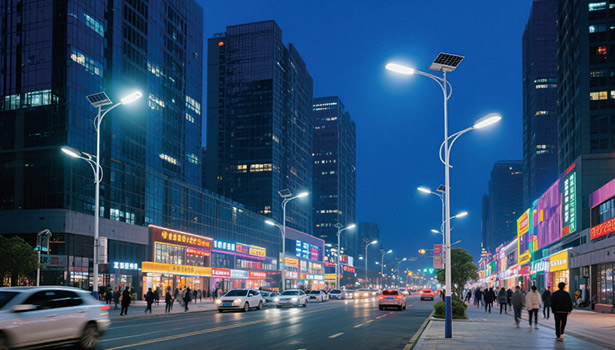
What to Consider When Buying Solar Street Lights?
Extent of Sunlight
Solar street lights rely on sunlight for energy, necessitating a comprehensive assessment of the installation area's daily sunlight duration, seasonal variations, and climate characteristics. Even in rainy or heavily shaded areas, ensuring over 8 hours of direct sunlight daily can be achieved by adjusting the photovoltaic panel installation angle and selecting high-efficiency conversion panels.
Durability
Prioritize components with high protection ratings (e.g., IP65+ waterproofing) to withstand extreme conditions like high temperatures, heavy rain, and sandstorms. Opt for underground battery installation to mitigate cold-weather impacts. Select hot-dip galvanized steel poles for enhanced corrosion resistance and wind load capacity (recommended to withstand winds exceeding Category 10).
System Type Selection
Stand-alone systems are suitable for single street light locations with ample sunlight, offering flexible installation without complex wiring. Centralized systems, which concentrate solar panels in open areas and supply power to multiple street lights via cables, are better suited for scenarios with dense tree shade and uneven lighting along roadways.
Lumen
Selection should be based on the width of the illuminated area, pedestrian traffic volume, and functional requirements: Residential roads primarily serving pedestrians can be adequately lit with 5000 lumen. Main thoroughfares and highways, where vehicles travel at higher speeds, require 6400-18000 lumen to ensure long-distance visibility while avoiding glare that compromises driving safety.
|
Application Scenario |
Required Lumen Range |
|
Residential Area |
Around 5,000 lumens |
|
Roads, Building Surroundings, Highways |
6,400–18,000 lumens |
Battery Capacity
Battery capacity should be calculated based on the region's longest consecutive rainy days and luminaire power. It is recommended to select batteries with at least 1.2 times capacity redundancy (e.g., if 1000Wh daily power is required, choose 1200Wh or higher). Simultaneously, match the photovoltaic panel power to ensure full charging within 3-5 hours of peak sunlight, avoiding capacity wastage or insufficiency.
The Development Road Map of Solar Street Lights
Higher Conversion Efficiency
Research focuses on novel photovoltaic materials like perovskite, aiming to boost conversion efficiency beyond 30%. Nano-coating technology reduces dust accumulation impacts. Paired with intelligent sun-tracking systems, panels dynamically adjust to solar angles, further enhancing power generation and enabling efficient energy storage even in low-light regions.
Design Optimization
Integrated street lights become mainstream, embedding photovoltaic panels, batteries, and controllers within the lamp post to minimize exposed components and enhance aesthetics. Lightweight alloy materials for lamp posts balance strength and portability, while customizable designs adapt to urban landscapes and extend to parks, scenic areas, and other settings.
Automation and Intelligence
An upgraded Battery Management System (BMS) accurately forecasts weather to preemptively adjust charging/discharging strategies. Integrated IoT technology enables remote cluster control, automatically adjusting brightness based on traffic flow (e.g., reducing power consumption late at night for energy savings). Self-diagnostic capabilities minimize maintenance costs while enhancing overall system stability.
Solar street lights offer significant advantages in environmental sustainability, cost-effectiveness, and practicality, making them a highly valuable green choice for modern infrastructure development. When selecting products, thoroughly consider factors such as lighting conditions, durability, system type, brightness requirements, and battery capacity to identify the most suitable solution. With ongoing technological advancements, solar street lights will play an increasingly vital role in sustainable lighting solutions.

